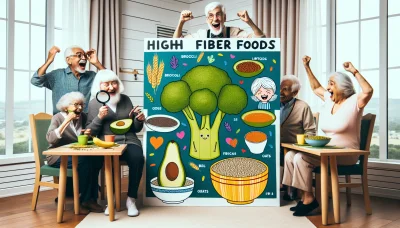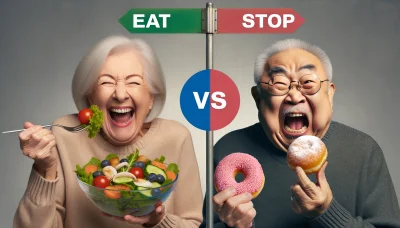Eat stop eat book Quiz
Test Your Knowledge
Question of
Understanding "Eat Stop Eat"
Principles of Intermittent Fasting
Intermittent fasting is a revolutionary approach to eating that alternates between periods of eating and fasting. It focuses not on what you eat, but when you eat, offering a flexible schedule with significant health benefits. The principles are grounded in historical practices and backed by modern science, making it an intriguing option for weight management and lifestyle improvement.
The Health Benefits of Fasting are extensive, including improved metabolic health, increased fat oxidation, and enhanced longevity. Studies show that intermittent fasting can lead to reductions in blood pressure, inflammatory markers, and risk factors for heart disease. It's not just about weight loss; it's about holistic well-being!
Fasting has a profound effect on metabolism, shifting the body into a fat-burning mode which can lead to sustained weight loss over time. This process, known as metabolic switching, is at the core of intermittent fasting's effectiveness. It's all about optimizing the timing to harness your body's natural rhythms!
The psychological effects of fasting should not be underestimated. The practice encourages mindfulness and can foster a healthier relationship with food. It's empoweringknowing you have control over your eating patterns can significantly boost confidence and promote a sense of accomplishment.
Overview of the Eat Stop Eat Method
The Eat Stop Eat method is an innovative twist on traditional intermittent fasting protocols. Developed by nutrition expert Brad Pilon, it simplifies the intermittent fasting lifestyle by incorporating 24-hour fasts into the week. This method has gained popularity due to its simplicity and flexibility.
Brad Pilon's program emerged from extensive research into the effects of short-term fasting on metabolism and muscle mass. The core concept revolves around one or two 24-hour fasts per week, with normal eating during non-fasting days. This pattern strikes a balance between calorie reduction and maintaining a regular lifestyle.
When compared to other diets, Eat Stop Eat stands out for its lack of dietary restrictions during non-fasting days and its emphasis on periodic fasting rather than daily calorie counting. This makes it more sustainable than many other diets that require constant vigilance over food intake.
Debunking Common Myths About Eat Stop Eat
- Myth vs. Reality: Hunger and Starvation Modes - Many believe that short-term fasting triggers starvation mode leading to muscle loss; however, research indicates that metabolism actually increases during shorter fasts.
- Impact on Muscle Mass and Exercise Performance - Contrary to popular belief, intermittent fasting when done correctly does not negatively affect muscle mass or exercise performance. In fact, it may enhance recovery due to reduced inflammation.
- Addressing Concerns About Nutrient Deficiency - With proper planning and nutrient-dense food choices during eating periods, nutrient deficiencies are unlikely in the context of Eat Stop Eat.
Fears around nutrient deficiency are also largely unfounded within the framework of Eat Stop Eat. By ensuring that meals consumed during non-fasting periods are rich in essential vitamins and minerals, one can maintain optimal nutrition without compromising the benefits of intermittent fasting.
Implementing the Eat Stop Eat Lifestyle
Getting Started with Intermittent Fasting
Embarking on the Eat Stop Eat journey begins with a fundamental understanding of intermittent fasting. This involves alternating periods of eating with periods of fasting, which can lead to numerous health benefits. To start, choose fasting intervals that work best for your lifestyle and current health status.
Preparing Your Body and Mind is crucial for a smooth transition into intermittent fasting. Begin by gradually reducing meal frequency and size a few days prior to your first full fasting day. This can help alleviate potential stress and discomfort associated with abrupt dietary changes.
Setting Realistic Goals is essential to stay motivated and track progress. Define clear, attainable milestones such as completing your first 24-hour fast or reaching a specific weight target within a month. Remember, consistency over perfection is key!
Creating a Supportive Environment can significantly enhance your chances of success. Inform friends and family about your new lifestyle choice to garner support, and consider joining online communities or groups where you can share experiences and advice.
Strategies for Successful Fasting Days
Managing Hunger and Cravings can be challenging, but it's entirely possible with the right approach. Stay busy with activities that divert your attention from food, such as reading, walking, or engaging in a hobby. The distraction will help you power through the fasting period more easily.
Hydration and Beverage Choices are pivotal during fasting days. Water should be your primary drink, but you may also include calorie-free beverages like herbal teas or black coffee to help suppress appetite without breaking your fast.
- Avoid sugary drinks and alcohol as they can trigger hunger pangs.
- Sip on water regularly throughout the day rather than waiting until you feel thirsty.
- Incorporate electrolytes if you're feeling lightheaded or fatigued.
- Caffeinated beverages may assist in suppressing appetite but consume them in moderation.
Balancing Social Life and Fasting might seem daunting at first, but it's all about planning. If possible, schedule social engagements outside of fasting periods or suggest activities that don't revolve around food like group fitness classes or movie nights.
Transitioning Back to Normal Eating
Post-Fast Meal Planning is critical to avoid overindulgence after a fast. Break your fast with light meals that include lean proteins, healthy fats, and fiber-rich vegetables to ease your digestive system back into regular eating patterns without overwhelming it.
Listening to Your Body's Signals post-fasting helps maintain balance. Pay attention to hunger cues and satiety signals rather than eating out of habit or boredom. This mindful approach ensures you're eating because you need nourishment rather than emotional reasons.
Maintaining Weight Loss Long-Term requires integrating what you've learned during fasting into everyday life. Continue practicing portion control, choosing nutrient-dense foods, and maintaining regular physical activity to keep those pounds off for good!
Nutrition and Meal Planning
Essential Nutrients for Optimal Health
Unlock the power of nutrition by understanding the essential nutrients that fuel your body! Proteins, carbs, and fats, collectively known as macronutrients, are the cornerstone of any diet. They provide energy, support muscle repair, and offer a source of essential fatty acids for bodily functions.
Vitamins and minerals are your body's best friends for optimal health! Each vitamin and mineral plays a crucial role in various bodily functions, from supporting bone health to boosting your immune system. Don't overlook these microscopic marvels!
The unsung heroes of a healthy diet? Fiber and water! Fiber keeps your digestive system running smoothly while water is involved in every single bodily function. Make sure you're getting enough of both to keep your health engine purring!
Designing Balanced Meals
Creating balanced meals is like painting a masterpiece, but instead of colors, we use food groups! Portion control is key; fill your plate with a variety of nutrient-rich foods in the right amounts to fuel your life's adventures.
Timing is everything when it comes to mealtime. Eating at regular intervals can help maintain energy levels and prevent overeating. Listen to your body's hunger cues and set meal times that align with your daily activities for maximum benefits.
Dive into the world of gastronomy with variety and moderation as your guiding principles. Experimenting with different foods not only tantalizes your taste buds but also ensures you're getting a broad spectrum of nutrients. Embrace culinary diversity!
Adapting Recipes for the Eat Stop Eat Diet
The Eat Stop Eat Diet doesn't mean giving up flavor; it's about making smart swaps! Replace high-calorie ingredients with healthier alternatives without sacrificing taste. Think Greek yogurt instead of sour cream creamy texture with a protein punch!
Cooking methods can make or break the nutrient content of your meals. Opt for steaming, grilling, or baking over frying to keep those vitamins intact while reducing unnecessary fats. Your body will thank you!
- Healthy Swaps: Use avocado as a butter alternative in sandwiches or mashed banana in baking for natural sweetness.
- Cooking Methods: Steam veggies instead of boiling to preserve water-soluble vitamins like vitamin C and B-vitamins.
- Herbs and Spices: Enhance dishes with herbs like basil or oregano and spices such as turmeric or cinnamon for an antioxidant boost.
- Sugar Reduction: Cut back on added sugars by using natural sweeteners such as dates or honey in moderation.
- Mindful Eating: Focus on the eating experience - savor each bite and listen to satiety signals to avoid overeating.
- Portion Sizes: Familiarize yourself with standard serving sizes to avoid unintentional overconsumption.
- Frequent Mistakes: Avoid completely cutting out food groups unless medically necessary; balance is critical.
Exercise and Physical Activity
Combining Exercise with Intermittent Fasting
When you pair exercise with intermittent fasting, the results can be astonishing! The key is to understand which exercises optimize fat burning during your fasting windows. This dynamic duo can lead to enhanced fat loss and improved metabolic health.
Best Types of Exercise During Fasting Periods : Low-intensity, steady-state activities like walking or yoga are perfect during fasting. They burn fat without depleting your energy reserves too quickly, making them ideal for those fasting hours!
Understanding Energy Levels and Performance : It's crucial to listen to your body while fasting. Your energy levels may vary, and that's perfectly fine. Adjust the intensity of your workouts accordingly to maintain performance without overexertion.
Structuring Workout Routines Around Fasting : Plan your workouts just before your eating windows for an energy boost from the upcoming meal. This strategy helps in optimizing recovery and leveraging the post-workout nutrition!
Strength Training and Muscle Preservation
Importance of Resistance Training : Resistance training isn't just about building muscle; it's a cornerstone for preserving it, especially when you're dieting. Engaging in regular strength workouts ensures muscle mass retention while shedding fat.
Progressive Overload Principle : To keep muscles growing, progressively increase the weights or resistance over time. This principle encourages continual adaptation and growth, pushing you to new heights of strength!
Recovery and Muscle Growth : Never underestimate the power of recovery! Muscles grow outside the gym when they're resting. Ensure you have adequate rest days and sleep to facilitate muscle repair and growth.
- Avoid overtraining: Listen to your body and don't push beyond what you can handle, as this can lead to injuries or burnout.
- Maintain proper form: Always prioritize technique over lifting heavier weights to prevent injuries and ensure effective muscle engagement.
- Balanced diet: Consuming enough protein is vital for muscle repair, so integrate a balanced diet that supports your strength training goals.
- Stay hydrated: Drinking plenty of water is essential for optimal performance during workouts and overall health.
- Vary your routine: To avoid plateaus, mix up your exercises every few weeks to challenge different muscle groups.
Cardiovascular Exercises and Fat Loss
Benefits of Aerobic Workouts : Cardiovascular exercises are phenomenal for heart health and burning calories. They improve endurance, help reduce stress, and play a significant role in achieving a caloric deficit for weight loss.
High-Intensity Interval Training (HIIT) : HIIT is a game-changer! It alternates between short bursts of intense activity followed by rest periods. This method can skyrocket calorie burn in a shorter timeframe compared to steady-state cardio.
Steady-State vs. Interval Cardio : Steady-state cardio involves maintaining a consistent speed and intensity throughout the workout session. It's excellent for beginners or those looking for lower impact options. On the flip side, interval training increases metabolism and intensity but should be approached with caution to avoid risk of injury or burnout.
Overcoming Challenges and Plateaus
Identifying Common Obstacles in Dieting
Embarking on a diet journey brims with unforeseen hurdles that can derail even the most determined individuals. Recognizing these barriers is the first step to overcoming them. Predominant among these are emotional eating patterns, which often serve as coping mechanisms for stress or boredom.
Social gatherings and peer influence can also pose significant challenges to diet adherence. The abundance of tempting foods and the desire to conform to social norms can make it tough to stick to dietary goals. Moreover, an initial burst of enthusiasm can wane, making it harder to maintain dietary discipline over time.
Emotional Eating and Stress Management
Emotional eating is a common adversary that can disrupt even the most disciplined diet plans. It's crucial to distinguish between true hunger and emotional cravings. Developing a toolkit for stress management, including activities like exercise, meditation, or hobbies, is vital for combating this challenge.
Stress management strategies not only aid in curbing emotional eating but also improve overall well-being. They ensure that food isn't used as a crutch during times of emotional upheaval, thus safeguarding your dieting efforts.
Dealing with Social Pressure and Temptations
The allure of high-calorie treats at social events often tempts dieters away from their nutrition plans. It's important to plan ahead by eating a healthy meal before attending events or bringing your own diet-friendly snacks. Assertiveness in declining offers and explaining your dietary choices helps maintain your resolve.
- Prepare responses for food pushers: "I'm full," or "I'm focusing on eating more healthily."
- Focus on socializing away from buffet tables or areas with food distractions.
- Choose water or calorie-free beverages to keep your hands occupied.
- Reward yourself with non-food related treats for resisting temptations.
Staying Motivated During Tough Times
Maintaining motivation is paramount when progress seems nonexistent. Setting realistic short-term goals alongside long-term aspirations helps keep the momentum alive. Celebrating small victories along the way reinforces positive behavior and fuels continuous effort.
Surrounding oneself with a supportive community, whether online or in person, provides encouragement and accountability. Sharing struggles and successes with others who understand the journey can be incredibly empowering and motivational.
Strategies for Breaking Through Weight Loss Plateaus
A weight loss plateau can feel like hitting a brick wall, but it's a common part of the journey. To overcome this stall, one effective strategy is recalibrating daily caloric intake or experimenting with fasting durations if safe and appropriate for you.
Adjusting Caloric Intake and Fasting Duration
Fine-tuning caloric intake based on current weight and activity levels might be necessary as the body adapts to new weights. Intermittent fasting methods like Eat Stop Eat may need adjustments in fasting frequency or duration to kickstart metabolism again.
Changing Up Exercise Routines
Variety in exercise routines not only combats boredom but also challenges the body in new ways, promoting further weight loss. Incorporating different types of workoutslike strength training, cardio, or high-intensity interval training (HIIT)can ignite fat-burning potential.
Importance of Sleep and Recovery
Adequate sleep is often an underestimated component of weight loss success. Restorative sleep optimizes hormone balance, which aids in appetite control and metabolism efficiency. Prioritizing recovery days is equally essential to prevent burnout and support muscle repair.
Long-Term Sustainability of Eat Stop Eat
Adapting the Diet to Lifestyle Changes
The true test of any diet's efficacy lies in its sustainability over time. Adapting Eat Stop Eat principles to fit evolving lifestyles ensures longevity in its practice. Flexibility allows individuals to tailor fasting periods around family events, work commitments, or travel schedules.
Incorporating Mindfulness and Mindset Practices
Mindfulness practices such as meditation and conscious eating foster a deeper connection between mind and body. This connection encourages more mindful food choices and strengthens resolve against impulsive eating behaviors.
Celebrating Milestones and Successes
Celebration is an integral part of sustaining motivation over time; acknowledging milestones big or small reinforces positive changes made along one's dietary path. Establishing non-food rewards as incentives can create enjoyable associations with meeting health goals.
Health Considerations and Safety Guidelines
Who Should Avoid Intermittent Fasting?
Intermittent fasting isn't a one-size-fits-all miracle diet. Certain individuals should steer clear, especially those with underlying health issues. Consulting a healthcare professional before starting is crucial to ensure it aligns with your health needs.
For those with metabolic diseases, such as diabetes, or individuals taking medications for blood pressure or heart conditions, intermittent fasting may pose risks. The changes in meal timing can affect medication efficacy and blood glucose control.
Pre-existing Medical Conditions to Consider
If you're dealing with chronic health conditions like heart disease or immune disorders, intermittent fasting requires extra caution. These conditions can be exacerbated by the stress fasting puts on the body.
Individuals with a history of eating disorders should avoid intermittent fasting. It can trigger unhealthy behaviors and disrupt recovery efforts, leading to potential health complications.
Pregnancy, Breastfeeding, and Child Nutrition
Pregnant or breastfeeding women should not engage in intermittent fasting. Nutritional needs during these periods are heightened, and fasting could negatively impact both mother and child's well-being.
Similarly, children and adolescents are not suitable candidates for intermittent fasting. Their growing bodies require consistent nutrition to support proper development and growth.
Age-Related Dietary Concerns
Older adults must approach intermittent fasting with caution due to potential nutrient deficiencies and the increased need for a balanced diet to maintain health and muscle mass.
Monitoring Health Markers and Biomarkers
Importance of Regular Check-ups
Regular check-ups are vital when practicing intermittent fasting. They help ensure your health remains on track and that any negative signs are caught early.
Tracking Progress with Blood Tests
Blood tests provide a window into how your body is reacting to intermittent fasting, allowing you to track biomarkers like cholesterol levels, liver function, and blood sugar.
-
Tips for Monitoring Health During Intermittent Fasting:
- Schedule regular medical check-ups.
- Maintain a log of key biomarkers.
- Adjust your fasting plan based on test results.
- Stay hydrated and maintain a balanced diet during eating periods.
Understanding Body Composition Changes
Monitoring body composition can help distinguish between loss of fat and loss of muscle massa crucial distinction for maintaining long-term health while following an intermittent fasting regimen.
Managing Side Effects and Symptoms
Coping with Headaches, Dizziness, or Fatigue
Headaches, dizziness, or fatigue can occur as the body adapts to new eating patterns. Staying hydrated and ensuring adequate electrolyte intake during non-fasting periods can mitigate these symptoms.
Electrolyte Balance and Supplementation
An imbalance in electrolytes during fasting is common but preventable. Including electrolyte-rich foods in your diet or considering supplementation may be necessary to maintain balance.
When to Break a Fast for Health Reasons
Listen to your bodysevere discomfort or symptoms like persistent nausea or weakness are signals that it's time to break the fast. Prioritizing health over sticking rigidly to a fasting schedule is essential.
Scientific Research Behind Intermittent Fasting
Studies on Weight Loss and Body Composition
Intermittent fasting is turning heads with its promising results in weight loss and body composition. Numerous studies have shown that intermittent fasting can lead to significant weight loss, often more than traditional diets. This approach to eating may not only help shed pounds but also improve body composition by reducing fat mass while preserving muscle.
The battle between short-term and long-term effects of intermittent fasting is ongoing. While initial rapid weight loss is common, sustaining these results over time requires consistent effort. Studies are monitoring participants to understand the long-term viability of this dietary pattern.
When pitted against continuous caloric restriction, intermittent fasting often comes out on top. It's not just about fewer caloriesit's when those calories are consumed that seems to make a difference. The strategic timing of meals inherent to intermittent fasting may offer metabolic advantages over simply eating less all the time.
Intermittent fasting could be a game-changer for individuals grappling with obesity-related health conditions. Research indicates improvements in various markers of health, including reductions in waist circumference and improvements in the symptoms of metabolic syndrome.
Intermittent Fasting and Metabolic Health
The impact of intermittent fasting extends beyond the scale, showing potential benefits for overall metabolic health. One major advantage includes better blood sugar control, which can be particularly beneficial for those at risk of type 2 diabetes. It seems that taking periodic breaks from eating could help stabilize blood sugar levels.
Beyond sugar management, intermittent fasting may also influence heart health by improving cholesterol levels and reducing blood pressure. These cardiovascular benefits are crucial since they contribute significantly to reducing the risk of heart disease.
Let's talk inflammationintermittent fasting might help cool down this internal fire. Chronic inflammation is linked to a host of diseases, and fasting protocols have been associated with decreased markers of inflammation, suggesting an immune-modulating effect that could bolster long-term health.
Potential Longevity Benefits of Fasting
The fountain of youth may not be a myth after allat least when it comes to intermittent fasting and its potential longevity benefits. Research has explored how fasting affects lifespan extension, with some animal studies indicating a correlation between calorie restriction and increased lifespan.
At the cellular level, intermittent fasting activates autophagya process where cells clean out damaged components. This cellular housekeeping is crucial for preventing age-related diseases and optimizing cellular function, potentially leading to longer life.
- Maintain Nutritional Balance: Even while restricting your eating window, ensure your diet is rich in essential nutrients.
- Stay Hydrated: Drinking plenty of water is crucial during fasting periods to help manage hunger and maintain hydration levels.
- Avoid Overindulgence: When it's time to eat, resist the temptation to overeat; focus on portion control and healthy food choices.
- Listen to Your Body: Pay attention to your body's signals; if you feel unwell or excessively fatigued, adjust your fasting regimen accordingly.
- Ease Into It: Start with shorter fasting periods and gradually increase as your body adapts to prevent undue stress.
- Consult Healthcare Providers: Before starting any new diet regimen, especially one involving fasting, seek advice from healthcare professionals.
- Maintain Consistency: For best results, adhere consistently to your chosen intermittent fasting schedule over time.
- Avoid Drastic Changes: Sudden, drastic changes to your diet can be stressful on the body; gradual changes are more sustainable long-term.
Fasting mimicking diets (FMDs) are gaining traction as a practical approach to reap the benefits of fasting without complete abstinence from food. These specially designed diets trick the body into a fasted state, potentially offering similar benefits regarding aging and disease prevention as traditional fasts do.
Personal Stories and Community Support
Success Stories from Eat Stop Eat Followers
The journey of Eat Stop Eat followers is nothing short of remarkable. Individuals from all walks of life have shared how the program has revolutionized their approach to eating and nutrition. Their success stories are a testament to the program's effectiveness, inspiring newcomers to start their own transformative journeys.
Weight Loss Journeys and Transformations are at the heart of Eat Stop Eat's success narratives. Users report significant weight loss, often accompanied by a newfound sense of confidence and vitality. These stories aren't just about shedding pounds; they're about gaining a new lease on life!
Improved Health Markers and Well-being : Beyond weight loss, many users experience enhanced health markers, such as reduced cholesterol levels and stabilized blood sugar. The impact extends to overall well-being, with many reporting better sleep, higher energy levels, and an improved mood.
Lifestyle Changes and New Habits Formed : Adopting Eat Stop Eat principles often leads to broader lifestyle changes. Followers speak of new habits that stick, like mindful eating and prioritizing physical activity changes that have a lasting positive impact on their daily lives.
Building a Supportive Community
The strength of the Eat Stop Eat philosophy is amplified by the vibrant community that surrounds it. Individuals embarking on this journey are never alone; they find camaraderie in groups who share similar goals and challenges.
Finding Local Groups and Online Forums can make all the difference in staying motivated. Engaging with others who are on the same path provides invaluable support and can lead to lasting friendships forged through shared experiences.
- Sharing Tips, Recipes, and Motivation: The community is a goldmine for practical advice. Members exchange recipes that align with fasting schedules, tips for managing hunger pangs, and motivational stories that keep spirits high.
- Accountability Partnerships and Challenges: Many find that having an accountability partner significantly boosts their commitment. Additionally, community challenges can foster a healthy competitive spirit that drives members to achieve their goals.
Expert Insights and Professional Advice
Navigating the world of intermittent fasting comes with its fair share of questions and concerns. Thankfully, there's no shortage of expert insights from professionals across health-related fields who endorse Eat Stop Eat.
Nutritionists' Take on Intermittent Fasting: Renowned nutritionists often praise the simplicity and flexibility of intermittent fasting. They provide guidance on how to maintain a balanced diet during eating windows to maximize nutritional benefits.
Fitness Coaches' Recommendations for Training: Integrating exercise with intermittent fasting requires know-how. Fitness coaches offer tailored recommendations ensuring training schedules complement fasting periods for optimal performance and recovery.
Medical Professionals' Guidelines for Health Monitoring: : It's crucial to monitor one's health when making dietary changes. Medical professionals provide essential guidelines for safely observing body responses throughout the intermittent fasting process.












